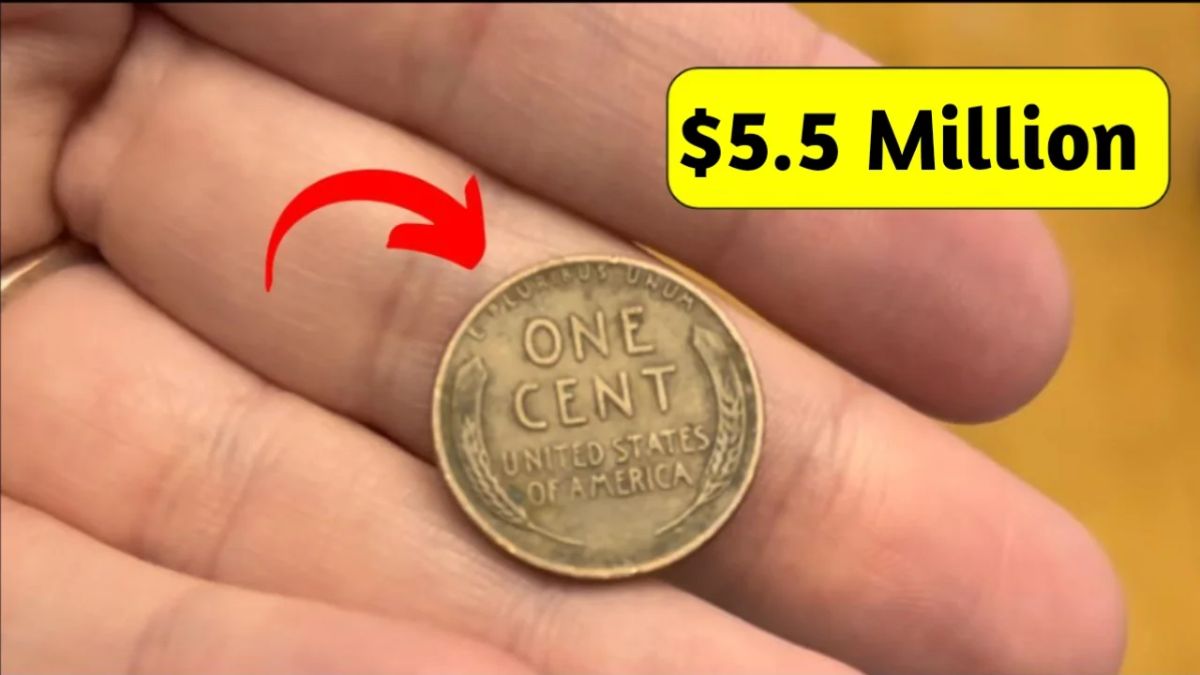The Lincoln Wheat Penny That Could Be Worth $5.5 Million: A Hidden Treasure in Your Pocket?
Imagine reaching into your pocket, pulling out a dusty old penny, and realizing it might be worth $5.5 million. Sounds like something out of a Hollywood movie, right? But in the fascinating world of coin collecting, stories like this aren’t just wishful thinking—they’re real possibilities.
A Humble Beginning with Historic Roots
Let’s rewind to 1909. That’s when the U.S. Mint released the very first Lincoln Wheat Penny to honor President Abraham Lincoln’s 100th birthday. For the first time in American history, a real person (not a symbol like Lady Liberty) appeared on a coin used in everyday transactions. The designer, Victor David Brenner, crafted a dignified profile of Lincoln on the front, while the reverse showed two stalks of wheat—an ode to the country’s agricultural backbone.
That design stuck around until 1958, making it one of the longest-running in U.S. coin history. It’s a classic piece of Americana—millions were made, billions used, but only a tiny handful turned into legends.
What Makes a Penny Worth Millions?
Here’s the thing: not all Lincoln Wheat Pennies are created equal. While most are only worth their face value, a select few are numismatic goldmines. Why? It usually comes down to rarity, condition, and a dash of minting magic (aka error coins).
One famous example is the 1943 Copper Penny, which was never supposed to exist. During World War II, copper was reserved for the war effort, so pennies that year were made of zinc-coated steel. But a few copper blanks accidentally slipped through—and today, those “mistakes” are worth a fortune.
The Mythic $5.5 Million Penny
So where does the rumored $5.5 million value come in? While there isn’t a public auction record confirming such a sale, collectors speculate that if the perfect Lincoln Wheat Penny ever surfaces—flawless condition, historic error, extreme rarity—it could command a price in that ballpark. Just one coin, well-preserved and unique enough, could smash records.
What to Look For in Your Change
Think you’ve got one of these rare gems? Here’s what to watch for:
- Key dates: 1909-S VDB, 1914-D, 1922 no mint mark, and the 1943 copper cent are among the top-tier rarities.
- Mint marks: Check for small letters like “S” (San Francisco) or “D” (Denver) under the date—they often add value.
- Condition matters: Coins are graded from Poor (P-1) to Mint State (MS-70). A higher grade means a higher payday.
- Color and luster: Red copper pennies—those with their original bright finish—tend to fetch more than their brown or dull counterparts.
Handle With Care!
If you think you’ve stumbled upon a valuable wheat penny, don’t clean it! Rubbing it with anything—even a soft cloth—can erase decades of history and value in seconds. Use gloves if possible, hold it by the edges, and store it in a coin-safe holder. Then, get it checked out by a professional coin grader or appraiser.
More Than Just Money
Even if your wheat penny isn’t a multimillion-dollar treasure, collecting them offers something priceless: a connection to American history. These little copper discs witnessed the Great Depression, two World Wars, and the evolution of modern America. They’re time capsules, quietly telling stories from pockets and purses across generations.
The Final Coin Toss
Whether you’re a seasoned collector or just curious about the coins in your change jar, the Lincoln Wheat Penny invites you into a world where history, chance, and treasure collide. Who knows? That penny you almost tossed might just be hiding a fortune. Keep your eyes open—you could be holding the next $5.5 million mystery.
